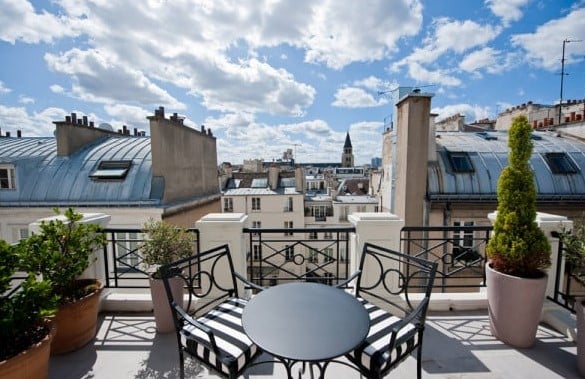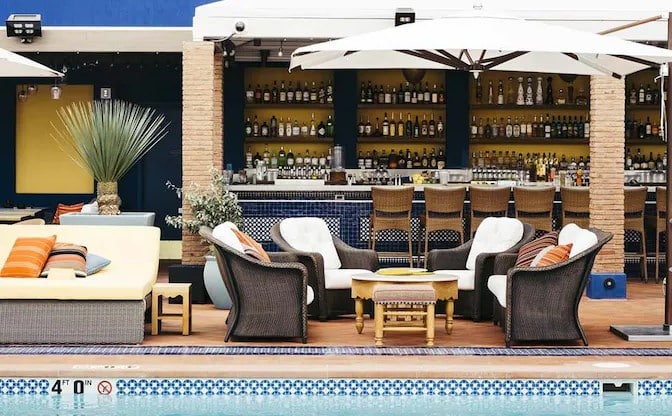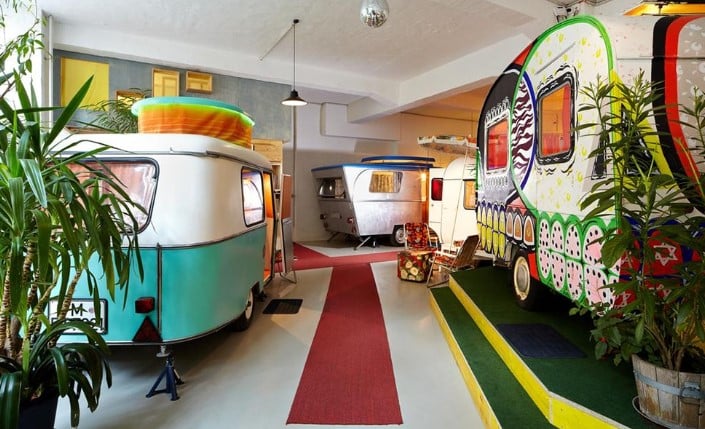Home interior design is a fascinating world that allows you to transform your living spaces into personal havens that reflect your style and create a welcoming ambiance. From choosing the right furniture and color palettes to incorporating sustainable materials and embracing the latest trends, the possibilities are endless. Whether you’re a seasoned decorator or just starting your design journey, this guide will provide you with valuable insights and inspiration to create a home that truly reflects your unique personality and enhances your everyday life.
We’ll explore various design styles, from the minimalist elegance of Scandinavian design to the cozy charm of farmhouse aesthetics, and delve into the practical aspects of space optimization and functionality. We’ll also uncover the secrets to creating a welcoming atmosphere, the power of lighting, and the importance of incorporating personal touches to make your home truly your own. Join us as we navigate the exciting world of home interior design and discover how to create a space that is both beautiful and functional.
Home Interior Design Styles
Home interior design styles are a reflection of personal taste and preferences, and they encompass a wide range of aesthetics, from minimalist to traditional. Understanding the key characteristics of popular styles can help you create a space that reflects your personality and meets your functional needs.
Minimalist Design
Minimalist design emphasizes simplicity, functionality, and clean lines. It is characterized by a limited use of colors, furniture, and decorative elements, creating a sense of spaciousness and tranquility.
- Color Palettes: Neutral colors like white, gray, black, and beige dominate minimalist spaces. A few accent colors can be used to add pops of interest.
- Materials: Natural materials like wood, stone, and metal are preferred for their durability and simplicity.
- Furniture: Minimalist furniture is typically sleek and functional, with clean lines and simple shapes. Multifunctional pieces are common to maximize space and minimize clutter.
Living Room Layout
A minimalist living room layout emphasizes open space and functionality.
- Furniture Placement: A low-profile sofa, a few accent chairs, and a coffee table are the essential pieces. They are arranged symmetrically to create a sense of balance.
- Color Scheme: A neutral color palette, such as white walls, a gray sofa, and black accents, creates a clean and uncluttered aesthetic.
- Décor Elements: A few carefully chosen pieces of art, a sculptural vase, or a minimalist rug can add interest and personality to the space.
Creating a Cozy and Welcoming Home: Home Interior
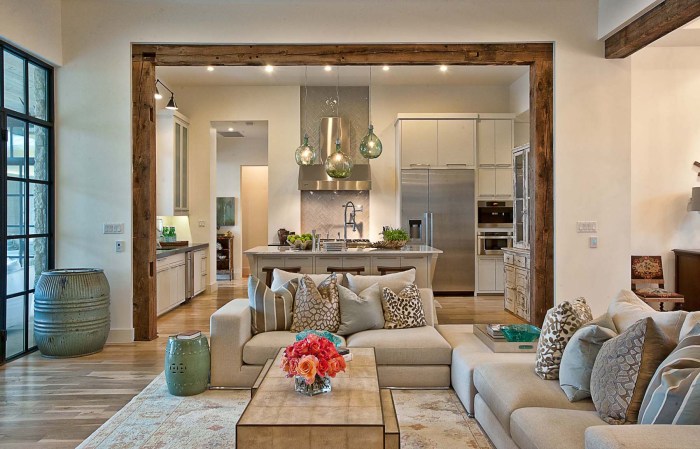
Your home should be a sanctuary, a place where you can relax, recharge, and feel truly comfortable. Creating a cozy and welcoming atmosphere is essential for making your home a space you love to spend time in. It’s about creating a sense of warmth, comfort, and invitation that makes everyone feel at ease.
Incorporating Soft Textures
Soft textures play a crucial role in creating a cozy ambiance. They add a tactile element that invites you to touch and feel the space. Consider incorporating soft fabrics like plush throws, fuzzy rugs, and velvet cushions. These textures provide a sense of warmth and comfort, making your home feel more inviting.
- Throws and Blankets: Drape soft throws over armchairs or sofas to create a welcoming and inviting spot for reading or relaxing.
- Rugs: Choose rugs with textures like shag, wool, or even faux fur to add warmth and softness underfoot.
- Cushions: Add a variety of cushions in different textures, like velvet, linen, or cotton, to create visual interest and tactile appeal.
Warm Lighting
Lighting plays a significant role in setting the mood of a space. Warm lighting, with its yellow or amber tones, creates a cozy and inviting atmosphere. It helps to create a sense of intimacy and relaxation, making your home feel like a haven.
- Dimmable Lights: Install dimmable lights in your living areas to adjust the brightness depending on the time of day and mood.
- Table Lamps: Use table lamps with warm-toned bulbs to create pockets of soft light throughout your home.
- Candles: Candles create a warm and inviting ambiance. Choose candles with scents that you enjoy, such as vanilla, cinnamon, or lavender, to enhance the coziness.
Inviting Scents
Scent is a powerful tool for creating a welcoming atmosphere. A pleasant aroma can instantly make your home feel more inviting and comfortable.
- Essential Oils: Diffuse essential oils like lavender, chamomile, or sandalwood to create a calming and relaxing scent.
- Scented Candles: Use scented candles with fragrances that you enjoy. Consider scents like vanilla, cinnamon, or citrus to create a warm and welcoming ambiance.
- Potpourri: Place bowls of potpourri in different areas of your home to add a subtle and inviting fragrance.
Creating a Welcoming Entryway
The entryway is the first impression of your home, so it’s important to make it welcoming.
- A Welcoming Mat: Place a welcoming mat at the entrance to invite guests in.
- Coat Rack or Hooks: Provide a place for guests to hang their coats and bags.
- A Console Table: Add a console table with a vase of fresh flowers or a decorative object to create a focal point.
Creating a Welcoming Living Room
The living room is the heart of the home, so it’s important to create a welcoming and inviting space.
- Comfortable Seating: Ensure you have comfortable seating options, such as a sofa, armchairs, or beanbags.
- Warm Colors: Choose warm colors for your walls and furniture to create a cozy and inviting atmosphere.
- Personal Touches: Add personal touches like family photos, artwork, or travel souvenirs to make the space feel more inviting.
Optimizing Space and Functionality
In the realm of home design, maximizing space and functionality is paramount, especially in smaller dwellings. This section explores strategies for optimizing space in small homes or apartments, identifying furniture pieces that offer dual functionality and storage solutions, and demonstrating how to organize and declutter different areas of a home.
Maximizing Space in Small Homes or Apartments
Small spaces present unique challenges, but with clever design solutions, they can be transformed into functional and aesthetically pleasing environments. Here are some key strategies for maximizing space in small homes or apartments:
- Vertical Storage: Utilizing vertical space is crucial in small homes. Install shelves, cabinets, and wall-mounted organizers to store items off the floor, freeing up valuable floor space.
- Multifunctional Furniture: Opt for furniture pieces that serve multiple purposes, such as a sofa bed that transforms into a sleeping space, a coffee table with built-in storage, or a desk that folds away when not in use.
- Mirrors: Mirrors create the illusion of larger space by reflecting light and expanding the visual field. Strategically placed mirrors can make a room feel more spacious and airy.
- Light Colors: Light colors, such as white, cream, or pastels, reflect light and create a sense of openness. Using light colors on walls, furniture, and textiles can make a small space feel larger.
- Minimalism: Embracing minimalism by decluttering and keeping only essential items can create a sense of spaciousness. A minimalist approach involves removing unnecessary clutter and focusing on essential items.
Furniture Pieces with Dual Functionality and Storage Solutions, Home interior
Smart furniture design can significantly impact space optimization. Furniture pieces with dual functionality and built-in storage solutions are invaluable in maximizing space and creating a clutter-free environment. Here are some examples:
- Ottoman with Storage: A stylish ottoman with a hidden storage compartment provides extra seating and a convenient place to store blankets, pillows, or other items.
- Bed Frame with Drawers: Choosing a bed frame with built-in drawers offers ample storage for bedding, clothing, or other personal items. This eliminates the need for bulky dressers or chests.
- Folding Table: A folding table can serve as a dining table, work surface, or even a temporary guest bed. It can be easily folded away when not in use, saving valuable floor space.
- Wall-Mounted Shelving: Wall-mounted shelving units offer a practical and stylish way to store books, decorative items, and other essentials. They free up floor space and add visual interest to a room.
Organizing and Decluttering Different Areas of a Home
Decluttering and organizing are essential for creating a functional and aesthetically pleasing home. By following a systematic approach, you can declutter and organize different areas of your home effectively.
- Kitchen: Start by removing expired items from the pantry and refrigerator. Organize dishes, utensils, and cookware according to frequency of use. Use drawer organizers to separate and categorize items.
- Bedroom: Sort through clothing, shoes, and accessories, keeping only items that are worn regularly or have sentimental value. Utilize under-bed storage containers for seasonal items or items that are not used frequently.
- Bathroom: Remove expired toiletries and cosmetics. Use shelf organizers to create designated spaces for towels, toiletries, and other bathroom essentials. Consider using a shower caddy to store shampoo, conditioner, and body wash.
- Living Room: Declutter coffee tables, end tables, and shelves, removing items that are not used regularly or that create visual clutter. Utilize baskets or decorative boxes to store remotes, magazines, and other items.
Incorporating Personal Style and Expression
Your home should reflect your unique personality and interests. It’s a space where you can showcase your passions, memories, and aesthetic preferences. By incorporating personal style, you create a haven that feels truly yours.
Utilizing Unique Art, Decor, and Furniture Pieces
Personalizing your home goes beyond choosing paint colors and furniture styles. It’s about adding elements that tell your story. Art, decor, and furniture pieces with unique character can transform your space into a reflection of your individuality.
- Art: Artwork is a powerful way to express your taste and create focal points. Choose pieces that resonate with you, whether it’s abstract paintings, photography, or even your own creations. Consider mixing different styles and sizes for a dynamic and eclectic look.
- Decor: Decorative items can add personality and warmth to your home. These can range from vintage finds, handmade ceramics, or even souvenirs from your travels. Arrange them in a way that tells a story and reflects your interests.
- Furniture: Furniture pieces with unique designs or vintage charm can become statement pieces in your home. Consider incorporating a handcrafted coffee table, an antique chest, or a mid-century modern armchair. These pieces will add character and become conversation starters.
The Importance of Lighting in Home Interior Design
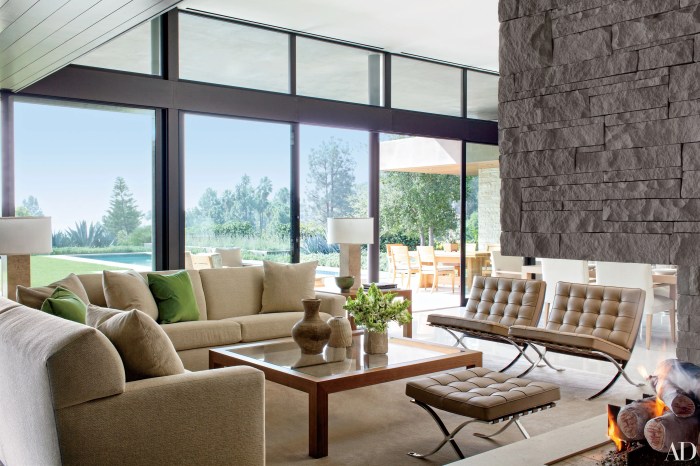
Lighting is a crucial element in home interior design, playing a significant role in shaping the ambiance, functionality, and overall aesthetic appeal of a space. It can transform a room from dull and lifeless to inviting and vibrant, highlighting architectural features and creating a sense of warmth and comfort.
Types of Lighting and Their Impact
Lighting can be categorized into different types, each serving a distinct purpose and influencing the mood and functionality of a space. Understanding these types and their applications is essential for creating a well-balanced lighting scheme.
- Natural Light: Sunlight is the most natural and desirable source of light, providing a bright and invigorating atmosphere. Large windows and skylights maximize natural light penetration, reducing the need for artificial lighting during the day and creating a sense of openness and spaciousness. However, excessive direct sunlight can cause glare and heat, necessitating the use of curtains, blinds, or shades for control.
- Ambient Light: Also known as general lighting, ambient light provides overall illumination to a space, setting the mood and providing visibility. It is typically achieved through ceiling fixtures, such as chandeliers, pendant lights, or recessed lights. Ambient light should be soft and diffused, creating a comfortable and inviting atmosphere.
- Task Lighting: As the name suggests, task lighting provides focused illumination for specific activities, such as reading, working, or cooking. It is typically positioned directly over the task area, such as a desk, countertop, or reading chair. Task lighting should be bright and focused, minimizing shadows and strain on the eyes.
- Accent Lighting: Accent lighting is used to highlight specific features or objects in a space, adding visual interest and depth. It can be achieved using track lighting, spotlights, or wall sconces, directing light towards artwork, sculptures, or architectural details. Accent lighting should be strategically placed to create dramatic effects and enhance the overall aesthetic appeal.
Creating a Balanced Lighting Scheme
A balanced lighting scheme involves a harmonious combination of different lighting types to create a functional and aesthetically pleasing space. The following tips can help achieve this:
- Layer Lighting: Combining ambient, task, and accent lighting creates a multi-dimensional lighting scheme that caters to different needs and moods. Ambient light provides overall illumination, task lighting provides focused light for specific activities, and accent lighting highlights focal points and adds visual interest.
- Consider the Room’s Function: The lighting scheme should be tailored to the room’s intended use. For example, a living room may require softer ambient lighting with accent lighting to highlight artwork, while a kitchen needs bright task lighting for cooking and food preparation.
- Control Light Levels: Using dimmers, switches, and smart lighting systems allows for flexible control of light levels, creating different moods and atmospheres throughout the day. Dimming the lights in the evening creates a cozy and relaxing ambiance, while brightening them during the day can enhance productivity and focus.
- Choose the Right Bulbs: Different types of light bulbs produce different colors and intensities of light. Incandescent bulbs produce a warm, yellowish light, while LED bulbs offer a cool, white light. Choosing the appropriate bulbs for each lighting type can significantly impact the overall ambiance and functionality of a space.
- Pay Attention to Color Temperature: Color temperature, measured in Kelvin (K), refers to the warmth or coolness of light. Warmer light (2700-3000K) is typically used for living rooms and bedrooms, creating a relaxing and inviting atmosphere. Cooler light (4000-6500K) is better suited for kitchens and workspaces, promoting alertness and focus.
Sustainable and Eco-Friendly Home Decor
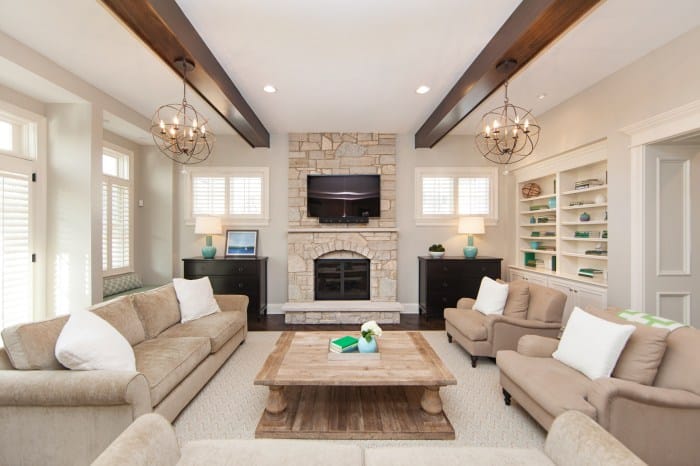
Creating a home that is both stylish and environmentally conscious is a growing trend. Sustainable home décor involves using materials and practices that minimize environmental impact while enhancing the beauty and functionality of your living space.
Benefits of Sustainable Home Decor
Choosing sustainable home décor offers a multitude of benefits for both the environment and your well-being.
- Reduced Environmental Impact: By opting for sustainable materials, you contribute to reducing deforestation, pollution, and carbon emissions associated with traditional manufacturing processes.
- Improved Indoor Air Quality: Natural and eco-friendly materials often emit fewer volatile organic compounds (VOCs), promoting a healthier indoor environment for you and your family.
- Enhanced Durability and Longevity: Sustainable materials are often more durable and long-lasting, reducing the need for frequent replacements and minimizing waste.
- Support for Ethical and Sustainable Practices: By choosing sustainable options, you support businesses committed to ethical sourcing, fair labor practices, and responsible environmental stewardship.
Popular Eco-Friendly Options
A wide range of sustainable materials and products are available for every aspect of home décor.
Furniture
- Reclaimed Wood: Reclaimed wood, salvaged from old buildings or structures, provides a unique character and reduces the need for new timber harvesting.
- Bamboo: Bamboo is a fast-growing, renewable resource that is strong, lightweight, and naturally beautiful. It is commonly used for furniture frames, flooring, and accent pieces.
- Sustainable Forestry Certified Wood: Look for furniture made from wood certified by organizations like the Forest Stewardship Council (FSC), which ensures responsible forestry practices.
Textiles
- Organic Cotton: Organic cotton is grown without the use of harmful pesticides and herbicides, making it a healthier choice for both the environment and your home.
- Hemp: Hemp is a durable and naturally antibacterial fiber that is becoming increasingly popular for textiles, rugs, and upholstery.
- Recycled Materials: Look for textiles made from recycled materials, such as plastic bottles or old clothing, to reduce waste and conserve resources.
Decor
- Upcycled Materials: Give new life to old items by incorporating upcycled materials, such as vintage furniture, repurposed glass bottles, or recycled metal into your décor.
- Natural Materials: Incorporate natural materials like stone, clay, and cork for a warm and inviting atmosphere.
- Local Craftsmanship: Support local artisans and makers by purchasing handmade décor items that often use sustainable materials and traditional techniques.
Resources for Sustainable Home Decor
Finding sustainable home décor options is easier than ever with a growing number of online retailers and local stores specializing in eco-friendly products.
- Online Marketplaces: Websites like Etsy, Uncommon Goods, and The Green Home offer a curated selection of sustainable and handmade home décor items.
- Sustainable Home Decor Stores: Many brick-and-mortar stores now specialize in sustainable home furnishings and décor.
- Local Craft Fairs and Markets: Support local artisans and makers by attending craft fairs and markets where you can find unique and sustainable décor items.
Home Interior Trends for 2023
Home interior design trends for 2023 reflect a shift towards a more personalized, sustainable, and functional approach to living spaces. This year, we see a blend of classic styles with contemporary elements, creating a unique aesthetic that emphasizes comfort, well-being, and a connection to nature.
Color Palettes
The color palettes for 2023 are characterized by a sense of warmth and serenity. Earthy tones, such as terracotta, olive green, and burnt orange, are popular choices for creating a grounding and inviting atmosphere. These colors evoke a sense of nature and are often paired with soft neutrals, like cream, beige, and gray, for a balanced and timeless look.
- Warm Neutrals: These colors, such as beige, cream, and light gray, provide a calming backdrop for bolder accents and create a sense of spaciousness.
- Earthy Tones: Colors like terracotta, olive green, and burnt orange add warmth and depth to a space, reflecting a connection to nature.
- Bold Accents: While the overall palette leans towards muted tones, pops of color, like deep blues, emerald greens, and vibrant yellows, can be used to create focal points and add personality.
Materials
Natural materials continue to dominate interior design trends, with a focus on sustainability and authenticity. Wood, stone, and rattan are popular choices for furniture, flooring, and decorative elements. These materials add warmth, texture, and a sense of timelessness to a space.
- Sustainable Wood: Using sustainably sourced wood for furniture, flooring, and accents adds a natural element to a space while promoting environmental responsibility.
- Natural Stone: Stone, particularly marble and granite, is often used for countertops, backsplashes, and flooring, adding a touch of luxury and durability.
- Rattan and Wicker: These natural materials are popular for furniture and lighting, adding a touch of bohemian charm and a sense of lightness to a space.
Design Elements
trends emphasize functionality and comfort, with a focus on creating spaces that are both stylish and practical.
- Curved Furniture: Rounded edges and flowing lines create a sense of softness and comfort, replacing sharp angles and hard lines.
- Multifunctional Furniture: Pieces that serve multiple purposes, like a sofa bed or a coffee table with built-in storage, are essential for maximizing space and functionality.
- Biophilic Design: Incorporating elements of nature, such as plants, natural light, and organic materials, creates a sense of well-being and promotes a connection to the outdoors.
Incorporating Trends into Different Areas of the Home
- Living Room: Use a warm neutral palette with pops of earthy tones for the walls and furniture. Incorporate natural materials like wood and rattan for furniture and accents. Consider a curved sofa for a touch of softness and a coffee table with built-in storage for functionality.
- Bedroom: Create a calming and relaxing atmosphere with a soft neutral color palette. Use natural materials like linen and cotton for bedding and textiles. Incorporate biophilic design elements, such as a houseplant or a window with a view of nature.
- Kitchen: Opt for natural materials like wood or stone for countertops and backsplashes. Consider using a warm neutral color palette for cabinetry, with accents of earthy tones for a modern and inviting feel.
- Bathroom: Create a spa-like retreat with natural materials like stone or wood for flooring and accents. Use soft neutral colors for the walls and incorporate biophilic elements, such as plants or a window with a view of nature.
As you embark on your home interior journey, remember that it’s all about creating a space that feels personalized and comfortable. Embrace the elements that resonate with you, whether it’s a vibrant color scheme, a collection of vintage finds, or a minimalist approach. The key is to create a space that reflects your unique style and provides a sense of peace and tranquility.
With a little planning, creativity, and inspiration, you can transform your home into a sanctuary that you truly love and cherish.
FAQ Section
What are some budget-friendly ways to update my home decor?
There are many budget-friendly ways to refresh your home decor! You can try repainting walls, adding throw pillows and blankets, rearranging furniture, incorporating plants, or using DIY projects to create unique pieces.
How can I choose the right paint colors for my home?
Consider the amount of natural light, the size of the room, and the overall mood you want to create. Use a color wheel to find complementary or contrasting colors that work well together. You can also use paint samples to test colors on your walls before making a final decision.
What are some essential home decor items that are worth investing in?
Investing in high-quality furniture pieces like a comfortable sofa, a durable dining table, and a well-made bed is a wise choice. These items will last longer and provide you with more value in the long run.

